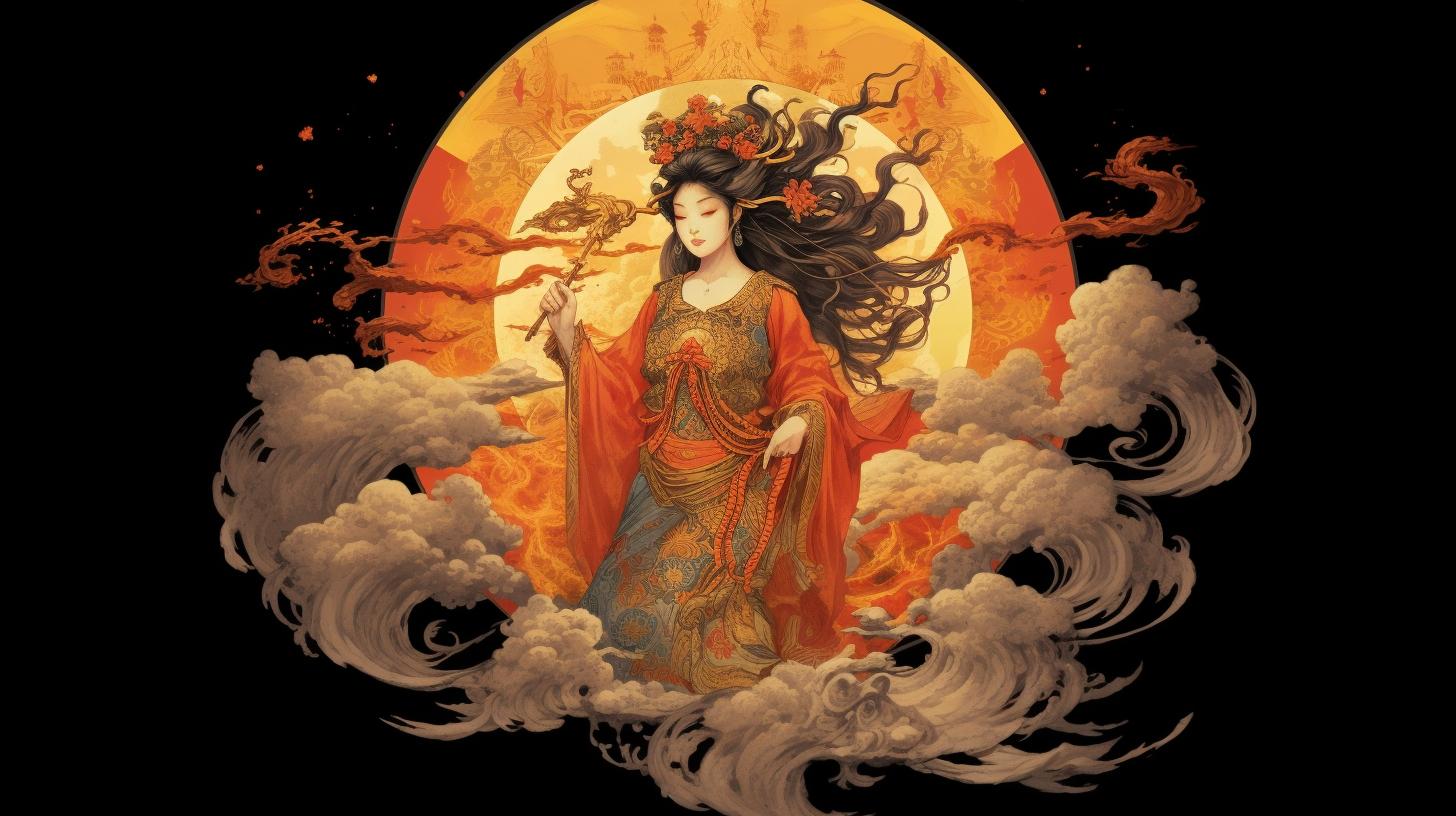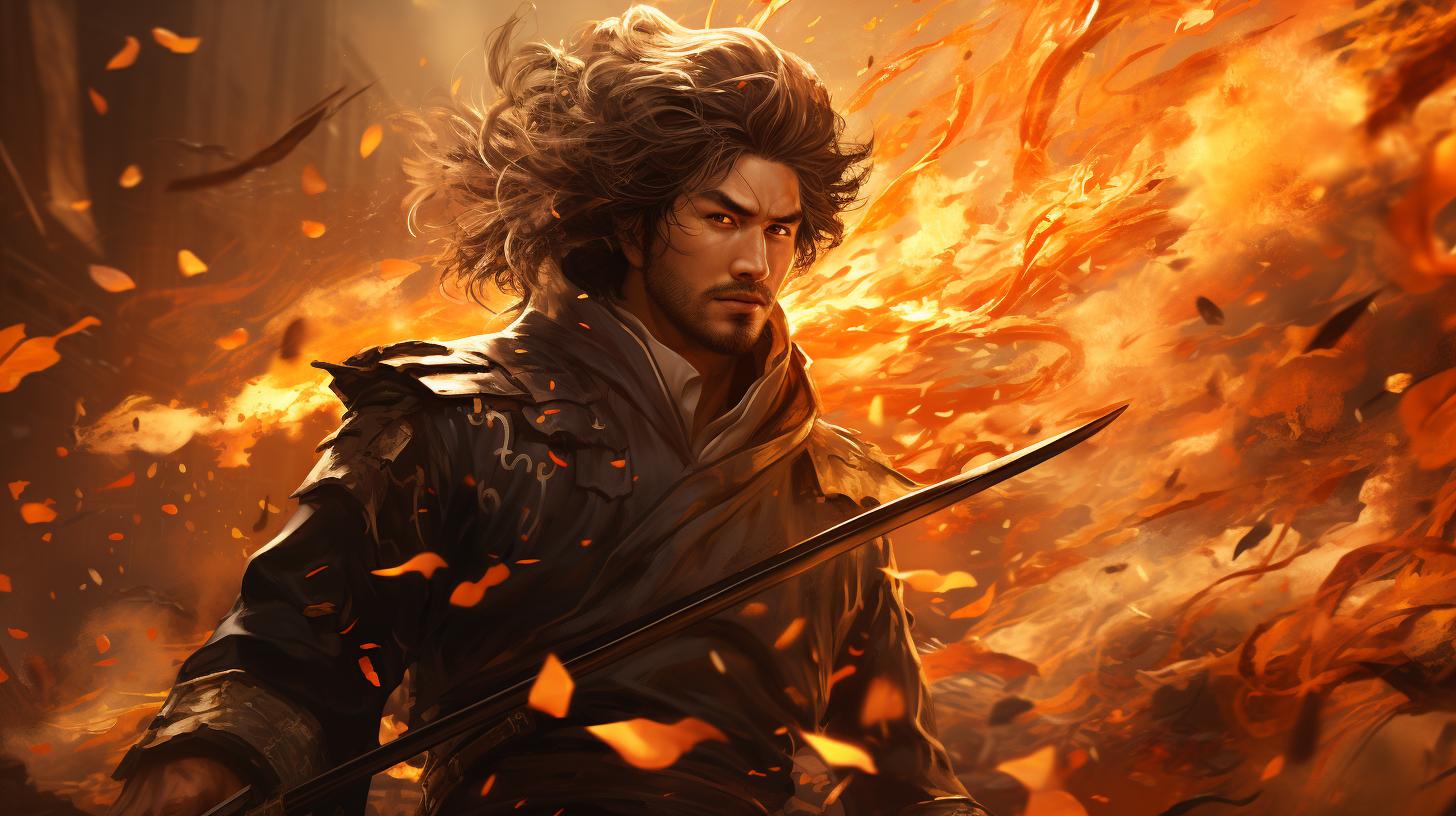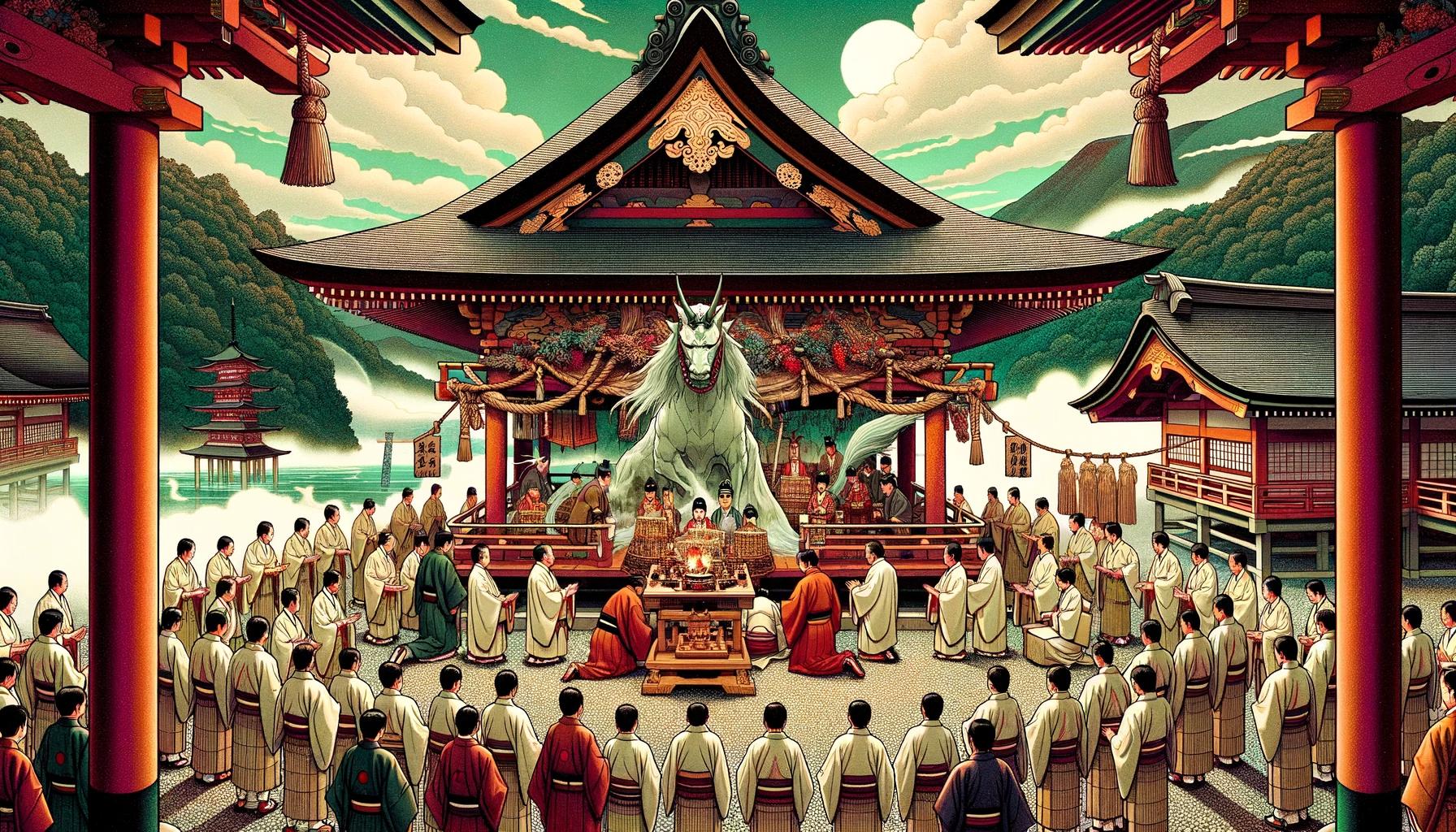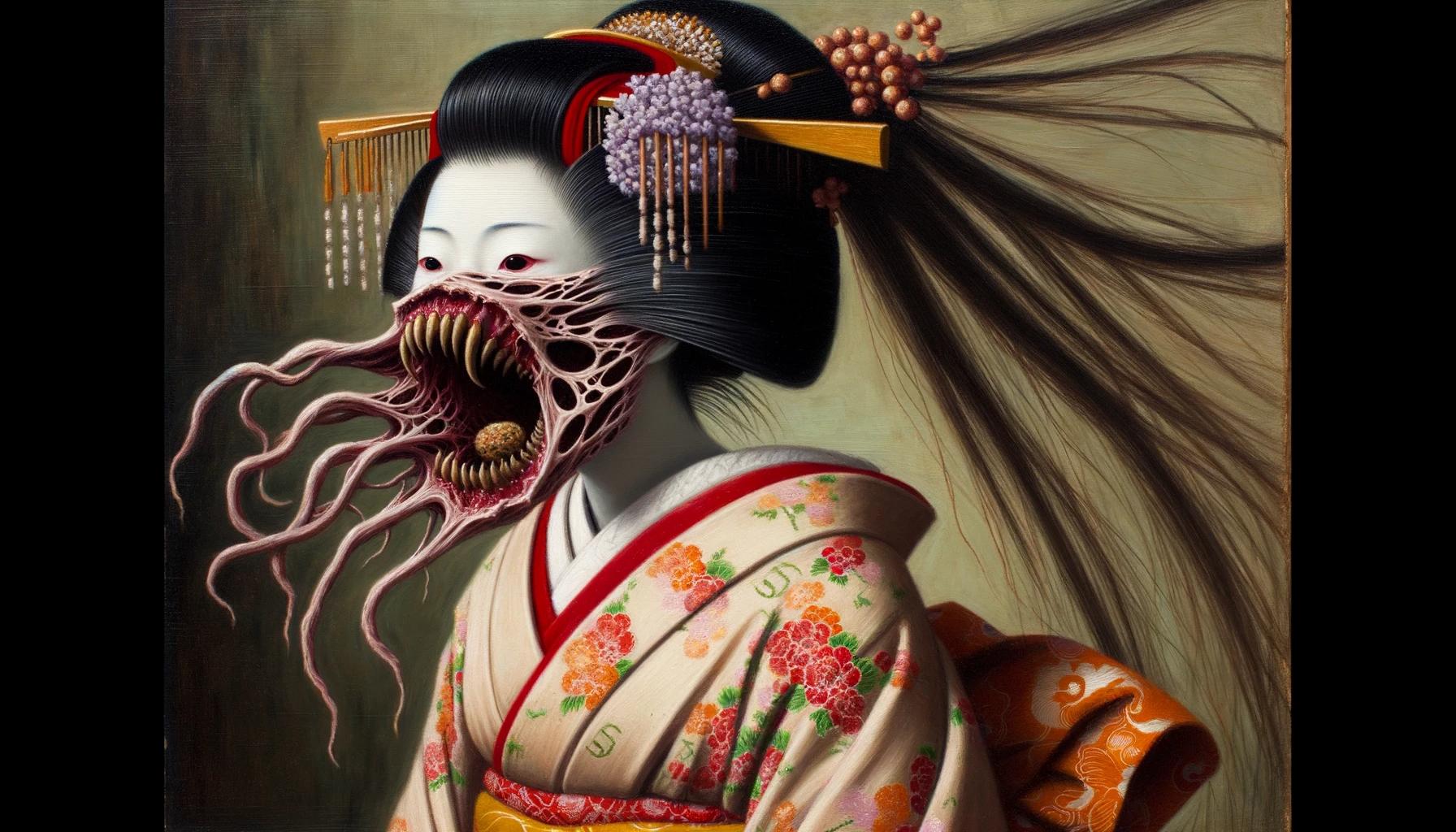Who is the Strongest God in Japanese Mythology: Unveiling the Powerhouses of Shintoism

Amaterasu, Susanoo, and Tsukuyomi are three prominent deities in Japanese mythology. Amaterasu, known as the Sun Goddess, holds a significant role in Shintoism and is regarded as the ruler of Takamagahara, the celestial realm.
Susanoo, the Storm God, and Tsukuyomi, the Moon Deity, are her siblings. These powerful gods are descendants of the creator deity Izanagi. From their origins to their symbolic representations, this article explores the strength and significance of these divine beings in Japanese mythology.
The influence of Amaterasu is particularly showcased in various Shinto shrines, including the renowned Great Shrine of Ise.
Name and Origins
In Japanese mythology, there are three prominent deities whose names and origins hold significant importance. These gods are Amaterasu, Susanoo, and Tsukuyomi. Each of them possesses unique characteristics and powers, shaping the beliefs and traditions of the Shinto religion.
Let’s uncover the fascinating stories and origins behind these mighty beings.
Amaterasu: The Sun Goddess
Amaterasu, also known as the Sun Goddess, is considered one of the most revered deities in Japanese mythology. She holds a central role in the Shinto belief system and is recognized as the ruler of Takamagahara, the heavenly realm.
Amaterasu is depicted as a symbol of light, radiance, and purity. Her descendants include the members of the Imperial House of Japan, tracing back through her grandson, Ninigi.
Susanoo: The Storm God
Susanoo, the Storm God, stands as a powerful figure in Japanese mythology.
Known for his wild and unpredictable nature, Susanoo is associated with storms, tempests, and the destructive forces of nature. Despite his turbulent temperament, he wields extraordinary strength and protects the realm against malevolent entities.
His relationship with his sister Amaterasu has been characterized by conflict and reconciliation throughout mythological narratives.
Tsukuyomi: The Moon Deity
Tsukuyomi, the Moon Deity, holds a significant role in Japanese mythology as the ruler of the night and the celestial body that illuminates the darkness. Often depicted as a stoic and silent figure, Tsukuyomi represents tranquility, reflection, and the mysteries hidden within the lunar domain.
The tales surrounding Tsukuyomi’s exploits and encounters paint him as a calm yet enigmatic presence in the pantheon of Japanese gods.
These gods, Amaterasu, Susanoo, and Tsukuyomi, weave together a fascinating tapestry of supernatural power and mythological narratives within the realm of Japanese mythology.
Their divine origins and distinct characteristics continue to captivate and inspire the beliefs and traditions of the Shinto religion.
Japanese Mythology
Japanese mythology encompasses a rich tapestry of legends and stories that form the foundation of the country’s cultural and spiritual traditions. Within this mythology, various gods and goddesses play significant roles, shaping the beliefs and practices of the Japanese people.
Creation Myth: Izanagi and Izanami
A crucial aspect of Japanese mythology is the creation story involving Izanagi and Izanami. According to this myth, these divine siblings were tasked with forming the world. They stood upon the Floating Bridge of Heaven and stirred the primordial ocean with a jeweled spear.
As the water dripped from the spear, islands began to emerge, creating the Japanese archipelago.
However, tragedy struck when Izanami died while giving birth to the fire god, Kagutsuchi. Deeply saddened by her death, Izanagi ventured to the underworld to find her.
Although he eventually encountered Izanami, he discovered that she had transformed into a grotesque figure. Frightened, Izanagi fled, and Izanami swore to take a thousand lives every day in retaliation.
This myth not only explains the origins of Japan but also sets the stage for the birth of Amaterasu, Susanoo, and Tsukuyomi, the three most prominent deities in Japanese mythology.
Role of Amaterasu in Shintoism
Amaterasu, the Sun Goddess, holds immense importance in Shintoism, the indigenous religion of Japan. She is revered as a creator deity and the ruler of Takamagahara, the celestial realm. Amaterasu’s divine power manifests in the form of sunlight, which sustains life on Earth and symbolizes purity and enlightenment.
Shinto rituals often include prayers and offerings to Amaterasu, seeking her blessings for prosperity and protection. The Japanese Imperial Family, considered descendants of Amaterasu, also plays a crucial role in the continuity of these traditions.
The Three Precious Children
Amaterasu, along with her siblings, Susanoo and Tsukuyomi, forms the legendary group known as the “Three Precious Children.” While Amaterasu embodies the sun’s brilliance and warmth, Susanoo represents the unpredictable and sometimes destructive nature of storms.

Tsukuyomi, on the other hand, governs the moon and its cycles.
These three siblings represent fundamental aspects of nature and cosmic forces, each playing a unique and vital role in Japanese mythology and the shaping of the world.
- Amaterasu: The Sun Goddess symbolizing light, purity, and guidance
- Susanoo: The Storm God embodying the power and unpredictability of natural forces
- Tsukuyomi: The Moon Deity associated with the moon’s phases and influence in daily life
Together, these three deities form a crucial trinity within Japanese mythology, reflecting the interdependence of natural elements and the cyclical nature of life.
Amaterasu in Shinto Shrines
Amaterasu’s significance in Japanese mythology is greatly reflected in the various Shinto shrines dedicated to her worship. These sacred sites hold immense cultural and religious importance for the Japanese people, attracting numerous visitors and pilgrims seeking to connect with the divine.
Let’s explore two notable aspects of Amaterasu’s presence in Shinto shrines: The Great Shrine of Ise and other Amaterasu shrines scattered throughout Japan.
The Great Shrine of Ise
The Great Shrine of Ise, located in the Mie Prefecture, stands as the primary place of worship for Amaterasu. It is considered one of the most sacred and revered Shinto shrines in Japan.
The shrine complex consists of two main sanctuaries, known as the Inner Shrine (Naiku) and the Outer Shrine (Geku). Naiku is dedicated to Amaterasu and houses a mirror symbolizing her presence.
Geku is devoted to Toyouke Omikami, the goddess of food, agriculture, and industry. Each sanctuary receives reconstruction every 20 years in a solemn ritual called Shikinen Sengu, reinforcing the eternal connection between Amaterasu, the Imperial family, and the Japanese people.
Other Amaterasu Shrines in Japan
In addition to the Great Shrine of Ise, various other Shinto shrines throughout Japan are dedicated to Amaterasu. These shrines, although smaller in scale, play a significant role in local communities, fostering a sense of spiritual connection and cultural identity.
From the magnificent Atsuta Shrine in Nagoya to the tranquil Kasuga Grand Shrine in Nara, each of these sacred sites provides worshippers with an opportunity to pay homage to Amaterasu and seek her blessings.
As pilgrims visit these shrines, they engage in rituals and practices that aim to establish a personal connection with the divine power represented by Amaterasu. Devotees often offer prayers, make monetary donations, and participate in ceremonial processions during major festivals.
The profound influence of Amaterasu in Shinto shrines reflects the enduring legacy of this powerful goddess in Japanese mythology and underscores her central role in the spiritual fabric of Japan.
- Atsuta Shrine in Nagoya
- Kasuga Grand Shrine in Nara
- Meiji Shrine in Tokyo
- Izumo Taisha in Shimane
- Fushimi Inari Taisha in Kyoto
Amaterasu’s presence within these shrines reinforces the deep-rooted connection between the Japanese people, their cultural heritage, and the powerful entities of their mythology.
It is through these sacred locations that worshippers find solace, inspiration, and a renewed sense of devotion to the Sun Goddess and her enduring strength.
Overall, the presence of Amaterasu in Shinto shrines is an integral aspect of Japanese religious and cultural practices.
The Great Shrine of Ise stands as a monumental symbol of reverence, while numerous other Amaterasu shrines scattered across the country provide local communities with a sacred space to express their faith and connect with ancient traditions.
These sites serve as a testament to the enduring power and significance of Amaterasu, the Sun Goddess, in Japanese mythology.
Comparisons with Other Gods
Amaterasu vs. Other Japanese Deities
In the realm of Japanese mythology, Amaterasu stands as one of the most powerful and influential deities. Her significant role as the Sun Goddess places her above many other gods and goddesses in terms of authority and reverence.
While there are numerous other deities in Japanese mythology, Amaterasu’s position as the ruler of Takamagahara, the celestial realm, sets her apart.
One notable comparison can be made between Amaterasu and Susanoo, the Storm God.
While both siblings possess immense power, their domains differ greatly. Amaterasu’s connection to the sun represents life, warmth, and light, while Susanoo’s affiliation with storms and chaos embodies a more unpredictable and turbulent energy.
Their contrasting natures showcase the diverse aspects of nature worshipped in Japanese mythology.
When comparing Amaterasu to Tsukuyomi, the Moon Deity, we see another distinct juxtaposition. Amaterasu’s radiance and benevolence as the Sun Goddess contrasts with Tsukuyomi’s association with the nighttime and the mysterious allure of the moon.
These differences highlight the complexity and complementary forces found within Japanese mythology.
Amaterasu in Relation to Mythological Figures
Beyond comparisons with other gods and goddesses, Amaterasu’s influence extends to various mythological figures within Japanese folklore. She is often depicted as a guiding force and a source of inspiration for heroes and heroines who embark on challenging quests or face formidable adversaries.
For instance, Amaterasu plays a significant role in the legendary tale of Susanoo’s battle against the eight-headed serpent, Yamata no Orochi. It is through her intervention and guidance that Susanoo is able to overcome this monstrous threat and emerge victorious.
The story exemplifies Amaterasu’s protective nature and her ability to empower others in their quest for triumph.
Additionally, Amaterasu’s connection to the creation myth of Izanagi and Izanami further emphasizes her importance in Japanese mythology.
As the ancestral deity of the Imperial House of Japan, she symbolizes the divine lineage that shapes the nation’s identity and heritage.
Summary
In Japanese mythology, Amaterasu stands as a powerful deity, reigning as the Sun Goddess and playing a significant role in the celestial realm. Comparisons with other gods and goddesses, such as Susanoo and Tsukuyomi, highlight the diverse forces of nature worshiped in Japanese mythology.
Furthermore, Amaterasu’s relationship with mythological figures showcases her guidance and protective nature. Her influence reaches beyond mere deity status, shaping the very fabric of Japanese history and culture.
Interpretations and Symbolism
Interpreting the role of Amaterasu in Japanese mythology reveals significant symbolisms associated with the Sun Goddess.
From various artistic representations to literary works, Amaterasu’s presence resonates across Japanese culture.
Representations of Amaterasu in Art and Literature
Amaterasu, as a prominent deity, has been depicted in numerous artworks and revered in literary masterpieces throughout history. Artists often portray her with a radiant halo, representing the brilliance of the sun.
Paintings and sculptures showcase her graceful presence, with flowing robes and a serene countenance.
In literature, Amaterasu is often described as a driving force behind the cycle of life, illuminating the world with her divine light.
Poets have penned verses praising her beauty and power, comparing her to the warmth that nurtures all living beings and bringing harmony to the realms.
Examples of artistic representations:
- Woodblock prints featuring Amaterasu’s golden radiance
- Statues showcasing her regal appearance and serene expression
- Poems capturing her awe-inspiring presence and life-giving qualities
Examples of literary works:
- “Kojiki” and “Nihon Shoki,” ancient chronicles highlighting Amaterasu’s significance
- Haiku and tanka poems celebrating her warmth and life-giving energy
- Modern novels and plays incorporating Amaterasu as a central theme
Amaterasu as a Symbol of Power and Healing
Beyond her representation in art and literature, Amaterasu symbolizes power and healing in Japanese mythology.
As the Sun Goddess, her warmth and light are seen as sources of strength and rejuvenation.
Amaterasu’s association with power is evident in the belief that her divine energy empowers the imperial lineage.
The Japanese imperial family traces its ancestry back to Amaterasu, emphasizing her role as the spiritual foundation of their authority.
In terms of healing, Amaterasu’s benevolent presence is believed to bring solace and relief.
Her nurturing rays heal both physical and spiritual ailments, bringing balance and harmony to individuals and the world at large.
Devotees seek solace and guidance from Amaterasu, integrating her symbolism into their daily lives.
Worshipers visit shrines dedicated to her, participate in rituals, and offer prayers for protection, healing, and success. These practices reflect the enduring belief in Amaterasu’s power and her significance as a divine force in Japanese mythology.
Modern Perspectives and Worship
Modern perspectives on Amaterasu in Japan reflect the continued significance and reverence towards this powerful deity. As the Sun Goddess, Amaterasu holds a prominent role in Japanese culture, spirituality, and tradition.
Her worship is deeply ingrained in the Shinto belief system and she is revered as a symbol of light, warmth, and life.
Amaterasu’s Continued Significance in Japan
Amaterasu continues to be a significant figure in contemporary Japan, with her presence felt in various aspects of society. Her influence extends beyond religious practices and can be seen in popular culture, art, and even politics.
Many people still pay homage to Amaterasu, seeking her blessings for prosperity, protection, and harmony.
Amaterasu’s significance also extends to the realm of spirituality and personal growth. Followers of Shintoism often turn to her as a source of inspiration and guidance in their daily lives.
Her portrayal as a benevolent deity evokes a sense of comfort and reassurance, providing solace and strength during difficult times.
Celebrations and Festivals Honoring Amaterasu
Throughout the year, various celebrations and festivals are held to honor Amaterasu and express gratitude for her blessings. One notable event is the Grand Festival of Ise, held at the Great Shrine of Ise, the primary place of worship for Amaterasu. This festival attracts thousands of devotees who come to pay their respects, participate in rituals, and experience the vibrant atmosphere.
Another significant celebration is the Aoi Matsuri held in Kyoto. This annual festival, dating back over a thousand years, includes a procession featuring participants dressed in traditional attire, with the central focus on a sacred palanquin carrying the spirit of Amaterasu. The festival showcases the deep-rooted reverence for Amaterasu and acts as a reminder of her enduring presence in Japanese culture.
- Grand Festival of Ise
- Aoi Matsuri
These celebrations and festivals serve as cultural touchstones, fostering a sense of community and reinforcing the spiritual connections to Amaterasu. They provide an opportunity for people to come together, express their devotion, and celebrate the enduring power of this mighty goddess.
.



















